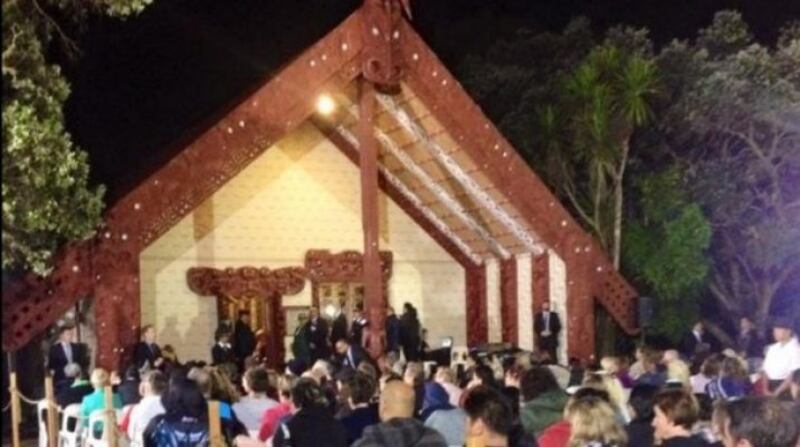A formal ceremony to mark Waitangi as New Zealand's first official wāhi tūpuna will be held today at 12:30pm when a plaque commemorating the listing will be unveiled.
Local kaumātua, the Chair of the Waitangi National Trust, Pita Paraone, and former members of Heritage New Zealand's Māori Heritage Council, John Klaricich and Cliff Whiting, are expected to be in attendance today.
Heritage New Zealand's National Māori Heritage Manager, Te Kenehi Teira, says, "It’s appropriate that this first wāhi tūpuna is formally acknowledged, and we are grateful to Waitangi National Trust for taking such care in marking its significance in this way."
He continues to say, "This is a special occasion, as Waitangi lies at the heart of New Zealand as a modern bicultural state – as well as its tremendous ancestral importance to many Māori, which is central to the wāhi tūpuna."
Under the Heritage New Zealand Pouhere Taonga Act, wāhi tūpuna identify places that are important to Māori for their ancestral significance and their associated cultural and traditional values.
However it does not necessarily adhere to "tapu" or sacredness according to Māori in the traditional, spiritual, religious, ritual or mythological sense.
"Wāhi tūpuna still have great significance to Māori however – but for values that may be different from those associated with wāhi tapu, and that are connected to tūpuna," explains Teira.
Compiled under the Heritage New Zealand Pouhere Taonga Act 2014 (the Act), the New Zealand Heritage List/Rārangi Kōrero identifies the nation’s heritage places. The List is divided into five parts – historic places, historic areas, wāhi tupuna, wāhi tapu and wāhi tapu areas.
Ancestral associations through Waitangi begin with Maikuku – a puhi [virgin of high rank] whose tapu was so profound that she was confined in a Waitangi shoreline cave and guarded by a taniwha. Many Ngāpuhi members today claim descent from Maikuku and her husband Hua through their offspring.
In the first half of the 19th Century, many Ngāpuhi rangatira (chiefs) were in the vanguard of change as they welcomed Pākehā missionaries and traders. Significantly, rangatira suggested Waitangi as a place for James Busby to be based when he was appointed British Resident in 1833.
According to Waitangi National Trust Chief Executive, Greg McManus, the wāhi tūpuna listing is something that should be highlighted.
He says, "It is highly appropriate that Waitangi was selected as New Zealand’s first wāhi tūpuna."
“Waitangi is undoubtedly New Zealand’s most important historic site, with significance for all New Zealanders, Māori, Pākehā and “New” New Zealanders alike. However this designation especially recognises the importance of Waitangi to Māori and we are honoured it is the first place in the country to be recognised in this way,” says McManus.
According to Teira, the wāhi tūpuna formally identifies and acknowledges the stream of Māori history, tradition and culture associated with Waitangi, and allows these ancestral connections to be shared and celebrated.
Click here for more information on the New Zealand Heritage List/Rārangi Kōrero.

